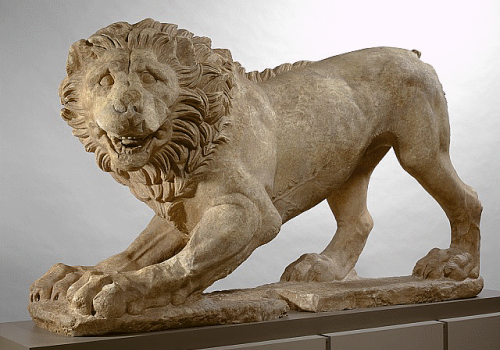
artful Animals
Supplemental resources
Workshop Overview
Available for Grades 3-5
Discover how artists portray animals in works of art. Students use inspiration from the galleries to create their own animal sculpture by manipulating clay. Surface texture is added using a sgraffito painting and carving technique.
Outcomes
- Discover how animals have been portrayed in art throughout history in various cultures.
- Compare and contrast two works of art in the galleries.
- Demonstrate 3-dimensional construction techniques as they apply to clay.
- Create a 3-dimensional clay animal that demonstrates the use of actual and implied texture in the surface design.
Curriculum
- Elaborate on an imaginative idea.
- Create artwork using a variety of processes and materials.
- Discuss how people from different places have made art for a variety of reasons.
Vocabulary
- Culture – values, beliefs, and practices that a group of people share
- Sculpture – a work of art that is 3-dimensional
- 3-dimensional – having height, width, and depth
- Form – a shape that is 3-dimensional
- Texture – an element of art that refers to how something feels on the surface (rough, furry, scaly, smooth, etc.)
- Score and slip technique – method of attaching clay to clay by scratching into and applying water to the clay pieces
- Sgraffito – a method of decorating a surface in which the top layer is scratched into revealing a different color underneath
Pre-Workshop Activities
Visit Smithsonian’s National Zoo website to explore different types of animals, their features, and their habitats.
Discuss various types of textures and try recreating them with hand-drawn patterns. What kinds of repeating shapes or lines would represent a furry texture, scaly texture or a bumpy texture?
Play “What Animal am I?” Prepare animal names or images printed on pieces of paper. Have one student draw an animal and answer “yes” or “no” questions from the class. “Are you bigger than a backpack?” “Do you have long ears?” “Can you run fast?”
Post-Workshop Activities
Discuss which animals the students enjoyed seeing in the Nelson-Atkins galleries. Revisit them and discover more animal art using the museum’s online collection search.
Invite students to research and write about the animal they created, including what it eats, where it lives, and what type of climate it prefers.
Provide a follow-up art process, giving students the opportunity to paint or collage a habitat for their animal.
Ask students how they would choose to display their sculpture in a museum. Would they create habitats for them or place them on pedestals? Create a class “Animal Exhibit” complete with titles and labels for each sculpture.